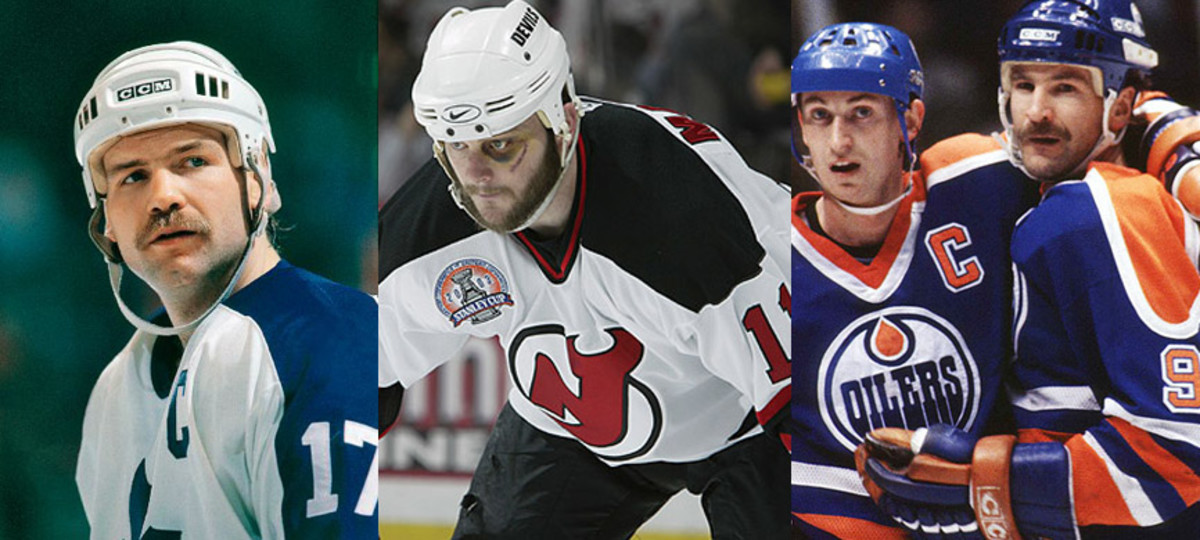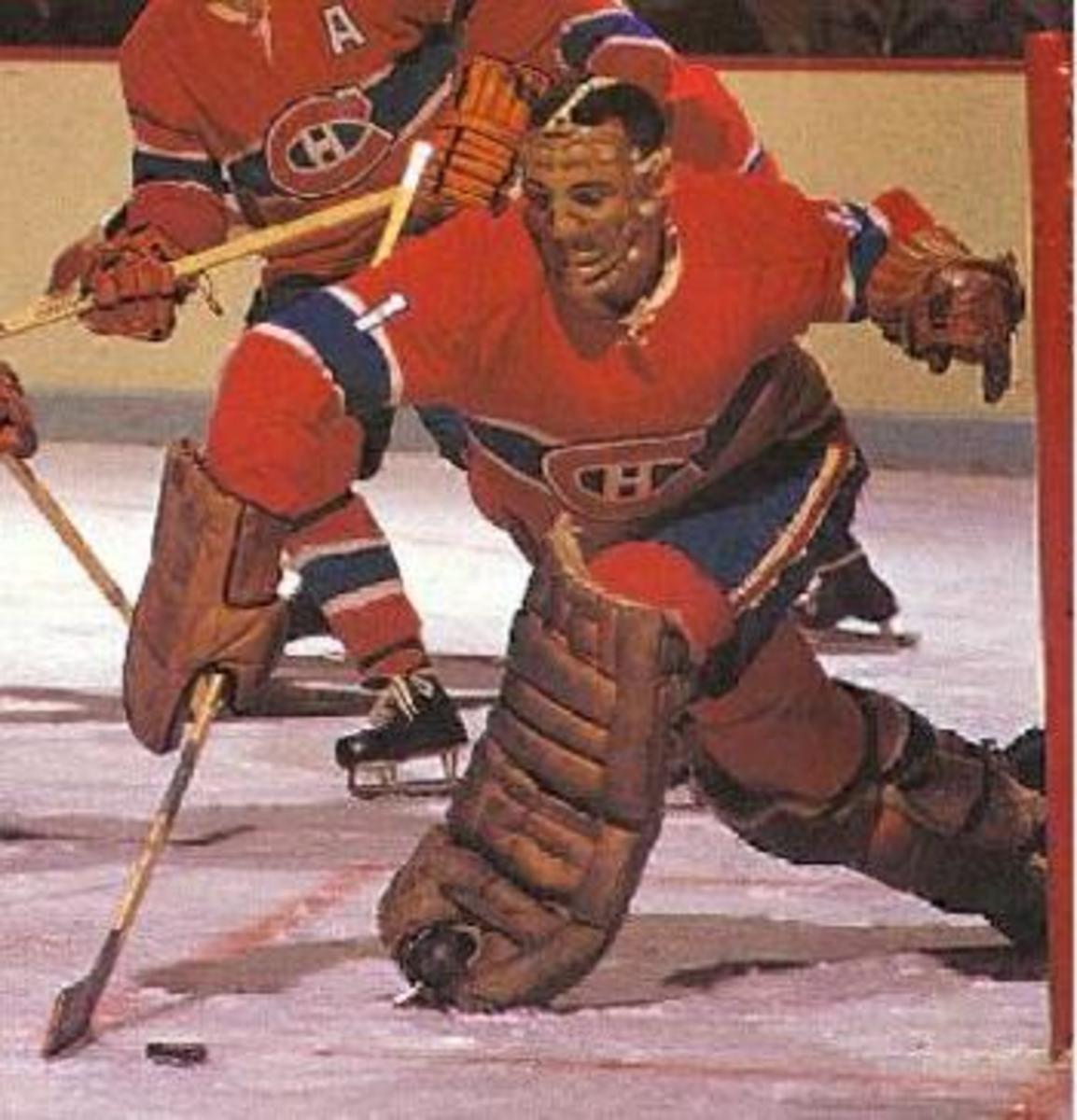Dear NHL: Get Rid of the Overtime Loss (2015 Edition)
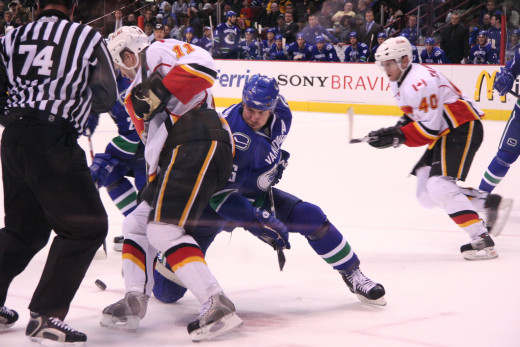
Still Rewarding Losing
Shortly before the start of this season, I wrote an article detailing the NHL's overtime loss. In summary: the overtime loss rewards teams by giving them a point in the standings for losing either in overtime or the shootout. Shorter: it rewards teams for losing.
Also in that article, I go over several different alternative methods to determining standings and how different the 2014 playoffs would have looked using any one of them. I'm doing that again this season, using the five alternative methods I introduced in that article plus a few more "out there" ideas that, mostly, are still better than the "loser point" the NHL currently uses.
Standings Systems
If you want the history of the overtime point and the harm it causes to some teams who have more wins than those who make the playoffs over them, refer to my 2014 article.
This season, there wasn't any real disaster where a team with fewer wins got in over a team with more. In fact, the 16 teams with the most wins all got into the postseason regardless of division or conference. The Los Angeles Kings almost pulled a 2012 and did it again, but they faltered in the last week and teams with many more wins, like Calgary and Winnipeg, stayed ahead of them instead.
Of note, Columbus, who ends the season on such a hot note, ended the season with 42 wins. This was just one less than playoff teams Ottawa, Pittsburgh and Detroit. However, because they had only 5 overtime losses compared to Ottawa (13), Pittsburgh (12), Detroit (14), Boston (13), and Florida (15), they were "officially eliminated" long before any of those other teams. Ironically, the OT loss system, which the NHL constantly defends as promoting parity in the league, actually prevented Columbus and its fans from enjoying a last-second playoff dash because while the Blue Jackets had a similar number of wins, they didn't lose in overtime as much as the other hopefuls, which meant they never had a chance. Once again, the system fails.
As in the last article, I will show alternate standings based on these five systems:
- Shootout Loss: similar to the current system, except the "loser point" is now only awarded during the shootout. Overtime losses are no different than regulation losses.
- 3-point system: In regulation, 3 pts earns a team a win while the losing team earns 0 points. This would hold true in overtime. If a game reaches a shootout, the winning team instead earns 2 pts while the losing team salvages a point.
- Shootout Win: Similar to the Shootout loss system, except now only one point is awarded to the winner of the shootout. The loser earns 0 points regardless.
- Ties: The system before the OT loss was introduced. If the game is tied after overtime, both teams receive a single point. No shootouts.
- Win-Loss. Regardless of overtime or the shootout, teams are given either a "win" or "loss" after every game. 2 pts can be recorded for historical purposes but would be token.
In addition to those, I will be testing these systems as well:
- One point regulation losses: In a strange twist, what if teams earned the loser point in regulation, but earned nothing for losing in overtime or the shootout?
- Points as a tiebreaker: Wins (regardless of OT/shootout) determine standing, and points are subsequently left as a first tiebreaker.
- 4-point system: 4 pts for a win, 3 pts for a shootout win, 1 point for a shootout loss.
- 5-point system: 5 points in each game are divided up depending on whether a game ends in regulation, overtime or the shootout.
With that, let's see just how different things can change just based on how much weight you give certain wins or losses.
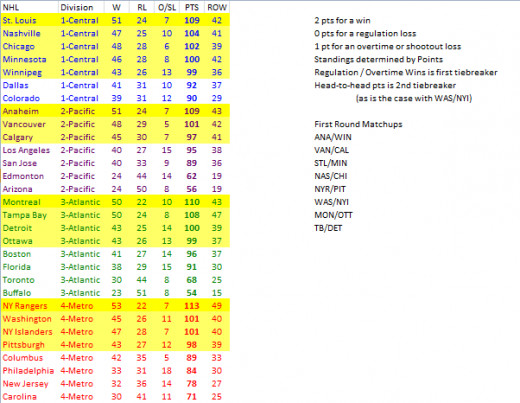
Color Codes:
- Bright yellow: Division winner
- Faded yellow: Playoff bound
- Gold: New division winner after changes
- Faded orange: former division winner after changes
- Blue: different playoff seeding after changes
- Green: sneaks into playoffs after changes
- Red: falls out of playoffs after changes
The Overtime Loss
Summary: The current system, its been in place since the 2005-06 season when the NHL returned from its season-long lockout. It's a modified form of the system in place before then, but without ties thank to the shootout.
Points: (2) for any win, (1) for an overtime or shootout loss, (0) for a regulation loss.
Pro: Without the tie, there aren't really any.
Cons: Some games distribute 3 pts to teams instead of 2 pts, rewards teams for losing, encourages "playing for overtime", which can make 3rd period action dull, allows teams to claim to be "over .500" with a record like 38-32-12, even though they have actually lost 44 games.
Rating: 1/5
Notes: The NHL was lucky this year that the teams with the most wins got into the postseason, though one oddity is that Washington gets home ice over the Islanders despite the Islanders having more overall wins - Washington forced the points tie thanks to having more OT losses, and with the ROW tiebreaker still tied, Washington gets home ice thanks to a better head-to-head.
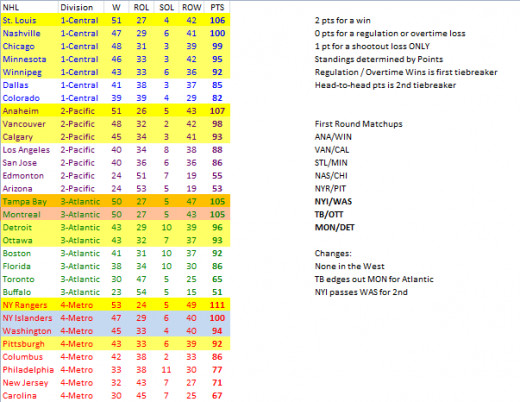
The Shootout Loss
Summary: The "loser point" is now only awarded to shootout losers. Losing teams in overtime now get nothing.
Points: (2) for any win, (1) for shootout losses, (0) for regulation or overtime losses
Pros: No reward for losing in overtime
Cons: 3pt/2pt distribution still exists, now encourages "playing for the shootout" which would now make overtime periods as dull as the third. The faulty "over .500" claim can still occur.
Rating: 1/5
Notes: Less opportunities for loser points, but teams that attempt to stall to guarantee them would create very boring games in the third period and overtime. Overall, not much of an improvement.
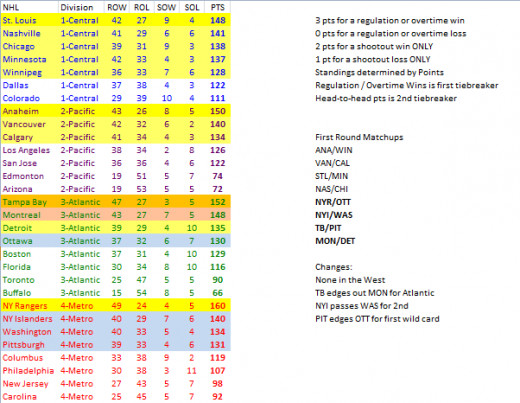
The Three-Point System
Summary: Three points are distributed every game, depending on whether a game ends in regulation or overtime, or the shootout.
Points: (3) for a regulation or overtime win, (2) for a shootout win, (1) for a shootout loss, (0) for a regulation or overtime loss
Pros: With fewer points for a shootout win, discourages playing for the shootout. More weight to wins than to shootout losses.
Cons: Still rewards teams for losing, confusing standings for casual fans, any pretense of using points for historical comparisons is shattered.
Rating: 3/5
Notes: This is a favorite alternate system for many, but I still don't like the existence of the loser point.
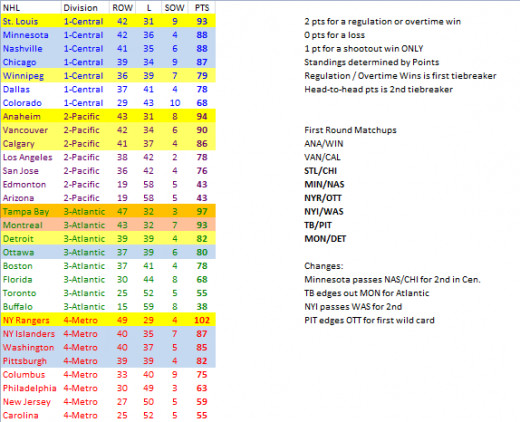
The Shootout Win System
Summary: Only one point is available if a game goes to a shootout; awarded to its winner. The loser earns nothing.
Points: (2) for a regulation or overtime win, (1) for a shootout win, (0) for a loss of any kind
Pros: Greatly discourages playing for the shootout, no reward for losing at any point.
Cons: Uneven point distribution still exists.
Rating: 5/5
Notes: This is my personal favorite alternate. No rewards for losing AND teams have less incentive to stall for the shootout. Sadly, it seems like this system will never come to pass.
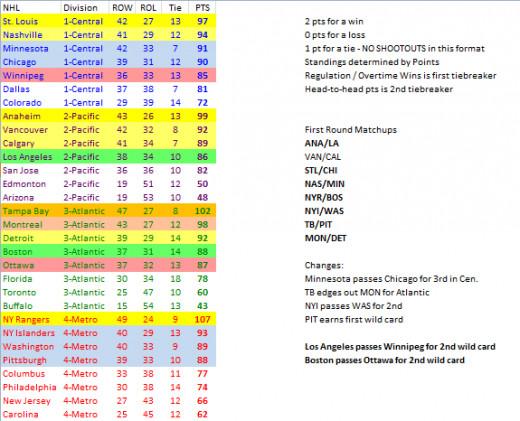
The Ties System
Summary: The system used by the league up until the 1999-2000 season, if a game is undecided following overtime, there is no shootout. Teams instead each earn a point for a tie.
Points: (2) for a win, (1) for a tie, (0) for a loss
Pros: Hey, the shootout's gone! Points are properly distributed once more.
Cons: People don't like ties, sometimes teams will play for the tie, resulting in dull action late in games.
Rating: 3/5
Notes: I've never had a problem with ties in sports. Many people do, however, and so we'll never see ties in the NHL again.
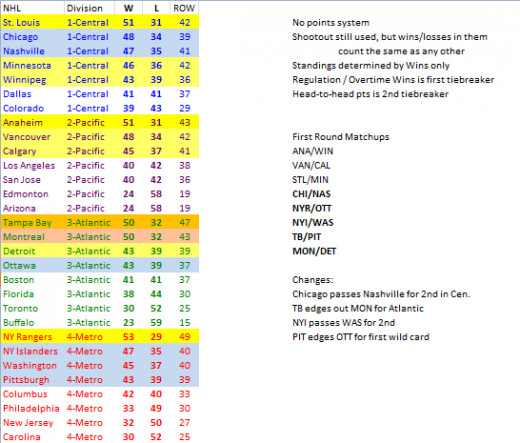
The Win-Loss System
Summary: Wins and losses, that's it. No points implemented at all (some people would want to at least keep 2 pts for wins for historical purposes, but these would be effectively cosmetic).
Points: None, just wins and losses
Pros: Teams aren't rewarded for losing, very easy to keep track of a team's record and to determine how a team can make/miss the playoffs.
Cons: Shootout wins given the same weight as regulation/overtime wins; loss of points system sure to upset major traditionalists (like that's a real con).
Rating: 4/5
Notes: Every other league that's not soccer uses a simple win-loss system, and they work out okay. Why not the NHL? Yeah, the fact that shootout wins would be given the same weight is unfortunately, though regulation/overtime wins can remain as a tiebreaker so its not so bad, right?
Next, some new points systems for this article, none of which are particularly great but I felt like showcasing anyway.
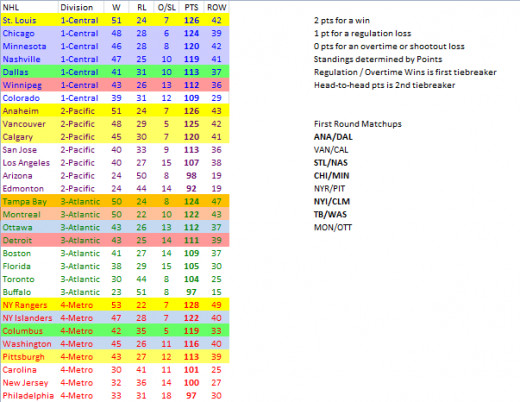
The One-Point Regulation Loss
Summary: Instead of earning a point for losing in overtime or the shootout, what if teams earned a point for losing in regulation? How crazy would that be?
Points: (2) for any win, (1) for regulation losses, (0) for overtime or shootout losses
Pros: Definitely discourages playing for overtime.
Cons: Definitely rewards teams for losing.
Rating: 1/5
Notes: Still, interesting way to look at it, no? Can you imagine a team like Buffalo, who was (probably) trying to tank this season, knowing that to do so they'd have to play well enough to earn regulation ties then just give up from there? As you can tell, this is the first standings system where they don't finish in last place.
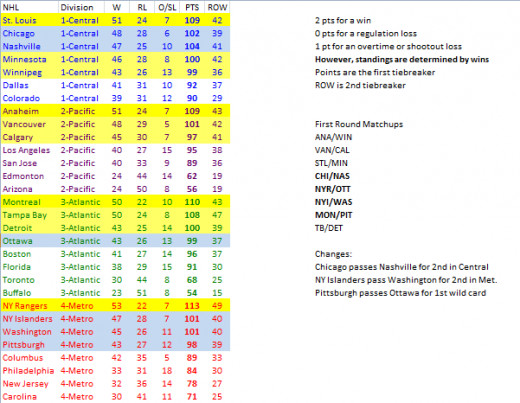
Points as a Tiebreaker
Summary: Wins and Points swap importance, so now overall wins determines standing, while points are relegated to first tiebreaker.
Points: Same as they are now, (2) for any win, (1) for overtime or shootout loss, (0) for regulation losses, but they are only used for tiebreaking purposes.
Pros: Wins given top priority.
Cons: Still rewards losing, albeit not nearly as much. Shootout wins given some weight as other kinds of wins (even though ROW remains as second tiebreaker).
Rating: 3/5
Notes: I actually wouldn't mind this system. After all, you'd want the teams with the most wins in the playoffs, right? Points would still have some importance as a tiebreaker, but even so I would think teams wouldn't try as hard to play for overtime or the shootout like this.
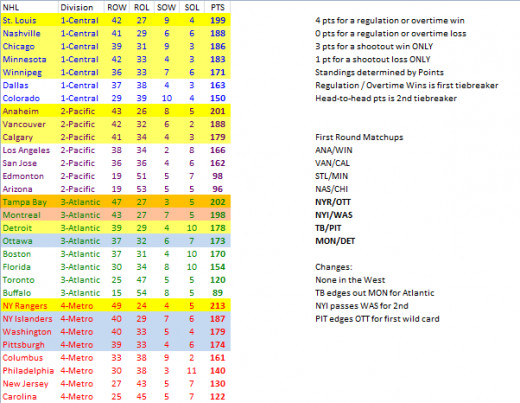
The Four-Point Game
Summary: Similar to the three-point game, but more emphasis is given to wins by given each kind of win an extra point.
Points: (4) for a regulation or overtime win, (3) for a shootout win, (1) for a shootout loss, (0) for a regulation or overtime loss
Pros: More emphasis on wins than three-point system.
Cons: Still rewards teams for losing, even if less so, still creates confusing standings for casual fans.
Rating: 4/5
Notes: I would actually prefer this to a three-point system if there must be a system where team earns a point for losing in a shootout. Wins need to have as much weight as possible compared to any loser point.
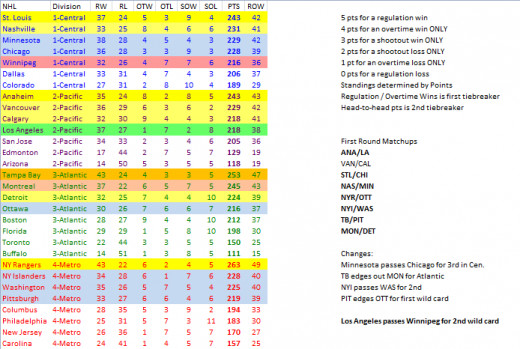
The Five-Point System
Summary: Four points not enough? The five point system covers all contingencies when it comes to regulation, overtime or shootout results.
Points: (5) for a regulation win, (4) for an overtime win, (3) for a shootout win, (2) for a shootout loss, (1) for an overtime loss, (0) for a regulation loss
Pros: Huge rewards for winning in regulation compared to winning in extra frames.
Cons: Rewards teams for losing, especially in a shootout, good luck convincing most people to try and follow these standings. 51-31 is one thing, 37-24-5-3-9-4 (243) is most certainly another.
Rating: 2/5
Notes: This kind of weighted distribution, I think, would be a bit too extreme for most people's liking.
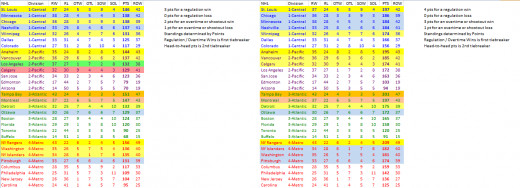
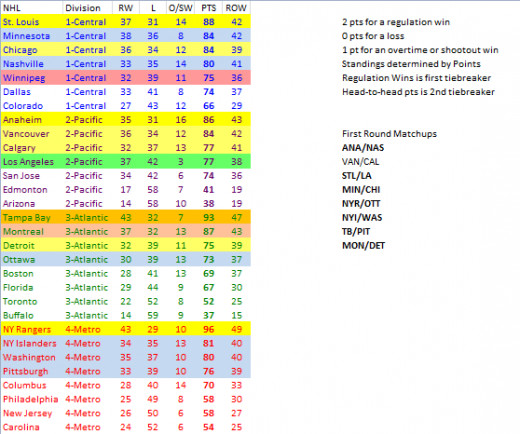
Notes
To the right are three slightly different systems to some of the ones above that restore weight to overtime results: the first two restore overtime losses rather than just shootout losses while the third give a single point to overtime wins as well as shootout wins, meaning the only way a team can earn two points in that final example is to win in regulation. That would make for some intense third periods, no?
As you can tell from the various examples, there are several constants that remain regardless of how I changed the point structures, and some that were always different. These included:
- The New York Rangers also ended up as the President's Trophy winner. St. Louis and Anaheim always won their divisions.
- Tampa Bay, almost always, finished ahead of Montreal in the Atlantic. Only in the current OT loss system and the points-as-tiebreaker systems do the Canadiens win that division.
- In most of the alternates, the Islanders pass Washington for 2nd in the Metropolitan, meaning they would have home ice in their matchup instead of the Capitals.
- Vancouver and Calgary, almost always, remained in their spots in the Pacific division. Its as though they were meant to face one another.
- Detroit almost always remained in 3rd in the Atlantic division, this despite the fact that they were nearly passed up by Ottawa in the OTL system.
- Unlike last season, where there was plenty of upheaval when it came to teams sneaking back into the playoffs, there wasn't too much of it this time around. The most common example was Los Angeles sneaking in ahead of Winnipeg (and in an odd instance, Calgary). In the tie system, Boston edges out Ottawa for a spot, but only in that system. Crazily, in the 1-pt regulation loss system, Columbus, thanks to only having five overtime losses, leaps into 3rd in the Atlantic. Detroit, somehow, falls out of playoff contention. In that same system, Dallas leaps in to take Winnipeg's spot as well.
Regardless, the current overtime loss system remains completely broken and every other system shown here, except the regulation loss point one I suppose, is a better alternative. Which one is your favorite, or preferred system? Do you have a different idea for a standings system that could work?


